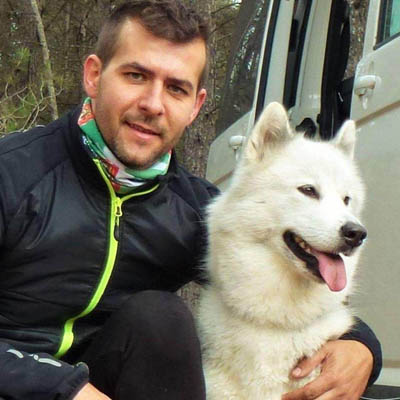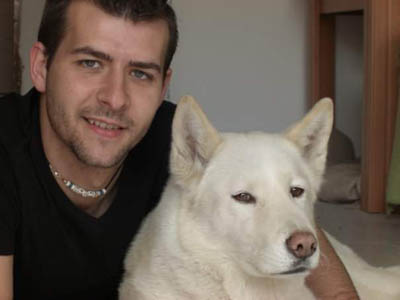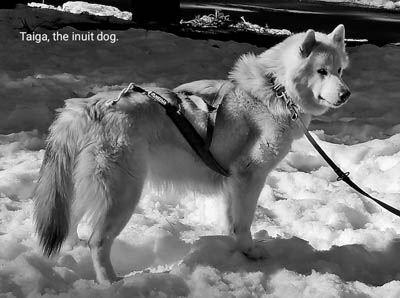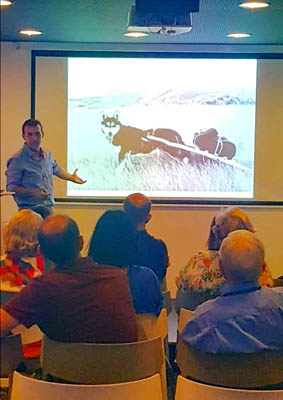In this Post
From the
Editor: PostScript – From Famine to Feast
F.I.D.O.: From the Other Side of the World to Qimmiq Territory
Oh, those dog commands!
Dogs – One of the many reasons I loved them
Wally Herbert’s dogs – the Norwegian connection
Nansen Sledge Production
Langsomt på Svalbard (Slowly on Svalbard) Deferred for One Year
Book Review: QIMMEQ – The Greenland Sled Dog
Siu-Ling Han Memorial Scholarship
The Trip of a Lifetime
F.I.D.O.: From the Other Side of the World to Qimmiq Territory
Oh, those dog commands!
Dogs – One of the many reasons I loved them
Wally Herbert’s dogs – the Norwegian connection
Nansen Sledge Production
Langsomt på Svalbard (Slowly on Svalbard) Deferred for One Year
Book Review: QIMMEQ – The Greenland Sled Dog
Siu-Ling Han Memorial Scholarship
The Trip of a Lifetime
Navigating This Site
Index of articles by subject
Index of Journal editions by
volume number
Index of PostScript editions by publication number
Search The Fan Hitch
Articles to download and print
Ordering Ken MacRury's Thesis
Our comprehensive list of resources
Defining the Inuit Dog
Talk to The Fan Hitch
Shop & Support Center
The Fan Hitch home page
Index of articles by subject
Index of Journal editions by
volume number
Index of PostScript editions by publication number
Search The Fan Hitch
Articles to download and print
Ordering Ken MacRury's Thesis
Our comprehensive list of resources
Defining the Inuit Dog
Talk to The Fan Hitch
Shop & Support Center
The Fan Hitch home page
Editor's/Publisher's
Statement
Editor: Sue Hamilton
Webmaster: Mark Hamilton
The Fan Hitch Website and
Publications of the Inuit Sled Dog– the
quarterly Journal (retired
in 2018) and PostScript – are dedicated to the
aboriginal landrace traditional Inuit Sled
Dog as well as related Inuit culture and
traditions.
PostScript is
published intermittently as
material becomes available. Online access
is free at: https://thefanhitch.org.
PostScript welcomes your
letters, stories, comments and
suggestions. The editorial staff reserves
the right to edit submissions used for
publication.
Contents of The Fan Hitch Website and its publications are protected by international copyright laws. No photo, drawing or text may be reproduced in any form without written consent. Webmasters please note: written consent is necessary before linking this site to yours! Please forward requests to Sue Hamilton, 55 Town Line Rd., Harwinton, Connecticut 06791, USA or mail@thefanhitch.org
Contents of The Fan Hitch Website and its publications are protected by international copyright laws. No photo, drawing or text may be reproduced in any form without written consent. Webmasters please note: written consent is necessary before linking this site to yours! Please forward requests to Sue Hamilton, 55 Town Line Rd., Harwinton, Connecticut 06791, USA or mail@thefanhitch.org
Featured Inuit Dog
Owner....

David Pacheco Filip with Taiga
Photo courtesy of David Pacheco Filip
From
the Other Side of the World to Qimmiq Territory
by David Pacheco Filip
Barcelona, Spain
by David Pacheco Filip
Barcelona, Spain
Since I was a little boy I had a strange attraction toward dogs. However, it wasn’t until much later when the stars decided to align, was I able to have a dog in my life.
I always had a dream, or a memory of a distant childhood. It was about dogs with a strange gaze, with blue eyes, lying peacefully on the floor of some business. I do not recall where or to whom those dogs belonged; but that look captivated me. Over the years I learned that those dogs originated from a land, the Arctic, very distant to my home.
In 1994 my life took a drastic turn. I suffered a knee injury which forced me to change the course of my most desired athletic dreams. While lying on a hospital bed after my knee surgery, my older brother came to visit and brought me a dog magazine with a title which said it all: “Special Edition: Nordic Breeds”.
That magazine hooked me in such a way that the love for the dogs with the strange blue-eyed gaze reawakened an interest within me. Since then my only thought was to learn everything I could about those dogs as I knew that someday I would manage to have one and by then I should be ready to give it the best of me. After that magazine there came many others. I would purchase any magazine or book that talked about arctic dogs. It wasn’t long after that the beauty of those dogs started gaining popularity in my country. I was still unable to have one of my own, but that rising popularity allowed me to gain access to a larger number of publications. Even after completing my administrative professional studies, I was sure I wanted to study canine psychology and learn to understand the strange and wild personality of those dogs.
It wasn’t until the end of 1998 when my family decided to adopt Nanoq, a blue-eyed Siberian Husky with a serious and penetrating gaze like the ones I remembered from my childhood. Unfortunately he was not with me for long. Two weeks after adopting him, while out on a walk, a man came running up to us screaming that the dog was his. I had no idea what kind of rights this man had over my just adopted dog, but I quickly realized that there was nothing I could do. Nanoq was jumping up and down with joy upon seeing this man who was asking for his dog back who was not properly identified when he escaped. I agreed to return his dog, but in that instant the man explained that Nanoq’s mother had very recently had a litter and that I would be able to choose my favorite pup.
The following week, I went to visit that beautiful litter, and from the first instant I fell in love with a little girl with a snow white coat, whom I named Tundra, after the vast polar plains that attracted me so much.

David with his sweet
Tundra
Photo courtesy of David Pacheco Filip
Tundra and I became inseparable. My studies and learnings
regarding these dogs had taught me that their socialization
and training needed to start at an early age. So we began
going to the vineyards that surrounded my town to expend her
energy and to start teaching her the basic commands for when
the time came for her to take charge and become my lead dog.
Photo courtesy of David Pacheco Filip
When she was close to a year of age we started training with the bicycle. We both enjoyed training together. It wasn’t long after that we met Manuel Ponce, a local musher who proposed training together and offered to hitch some of his older dogs with Tundra to have more fun. Manuel got me started in bikejoring competition. It did not take me long to realize that this was not for me. The anxiety and stress of the competition did not jive with my calm and nostalgic personality as a dreamer who saw the world of sled dogs in a different way. However, we continued training with Manuel, with whom we have maintained a great friendship.
Years went by and Tundra aged. I had to step away from that activity we loved so much to give her the retirement she deserved. I parked the bicycle and we took to long walks and memories of our joint adventures.
When Tundra was twelve she had the misfortune of getting mammary cancer. She had to have two surgeries but once recovered fate was waiting again with pyometra for which she had to have her uterus removed. Even with her age and constant problems, she always recovered strong, until one day after a few runs, she came up limping. After several tests we learned that she had three herniated disks. It wasn’t long after that her physical state deteriorated to the point of causing her hind quarters to be paralyzed. Everything worsened until on July 27, 2011 Tundra fell asleep in my arms one last time.
The pain of her loss has been immeasurable. My dream had come true but it had an expiration date. If I had learned anything from those books, videos and interest to know everything about the Nordic life, it was that in the arctic nothing comes easy and even when something is really hard you must press on as life does not pause.
During Tundra’s illness, I decided to document her progress on video tape so I would be able to observe in detail changes in her condition. This led me to have many people on Facebook request that I publish those videos to see how Tundra was doing. Those images of Tundra and everyone at home fighting for her recovery and her care led me to get closer and get to know people from faraway lands. Specifically, I met a Canadian musher named Natasha Keller. She showed me great love for my caring and dedication and I in turn for her lifestyle surrounded by dogs. A dog named Zoya she had lost not long before especially got my attention. Zoya was an Inuit Sled Dog (ISD), like the ones I had seen run so many times in my Arctic videos. It did not take Natasha long to see my interest for polar dogs. It was not only around the blue-eyed Siberian Huskies, but also I had an insatiable need to learn about arctic cultures – the people and in particular their dogs.
Natasha invited me to join a Facebook group where the whole world talked, wrote and shared pictures of that majestic animal, the qimmiq. Although I had only been mourning Tundra’s loss for a short time, I started feeling the “call of the wild” like the book by Jack London. Something was reborn within me; a new yearning had awakened within me. I could not live without a new polar dog, and my choice had been made. It had to be a qimmiq. Without realizing it, this dog had accompanied me throughout my whole life in my many books about arctic dogs, in my hours upon hours of videos where I would stop and rewind an image of those dogs running on the snow.

Taiga, the Inuit Dog
Photo courtesy of David Pacheco Filip
Photo courtesy of David Pacheco Filip
A little over a month later, Taiga, my most precious treasure, was born in Canada. Taiga has opened my eyes to a much more accurate image of the traditional Inuit Dog. I am the kind of person who has always enjoyed seeing and learning from a dog’s instincts, and giving them, within reason, what is most suitable for their nature. I have always considered that to be able to give an animal what they really need you must have previously studied not only the animal but also its culture of origin, the geography where they evolved over the centuries and above all be humble of mind and soul, to be able to see a reality that few may be privileged enough to see through the eyes of an Inuit Dog.
In 2015 I decided to start a group on Facebook called “Arctic Dogs of the World”. My many friendships from all over the arctic – from Greenland, Canada, Alaska, Siberia and even reaching Scandinavia, had given me the idea to put in touch all these people from all over the world having so much in common (the life in the arctic, the life with dogs, hunting, the geographical isolation, etc.) but at the same time, holding such great differences in the way they handle life as well as their cultures and beliefs surrounding the sled dog world. So, from there I try to share and above all have my Facebook group be the ones sharing their way of life, so they may learn from other cultures, from other people who do the same as they do, but each basing their approach on the ancestral teachings passed down through the centuries from parents to their children.
My interest in polar dogs and their history led me to create a second Facebook group named “Antarctic Sled Dogs” where I attempt to compile the rich yet limited history of Antarctica, of the great polar explorers and so many nostalgic scientists who share memories of their time in the Antarctic bases taking care of dogs with whom they shared their lives during their stay.

David at his polar presentation in Madrid
Photo courtesy of David Pacheco Filip
My passion has taken me to present conferences throughout my country where, in spite of its latitude, has a good amount of lovers of the polar regions and their dogs. In these workshops I attempt to bring the polar dog closer to them. History is an unavoidable part of my workshops as is the knowledge of the polar regions and their people and, above all, the most absolute respect.
Taiga has opened up the polar world to me. It has not been an easy journey. Sharing my life with an Inuit Dog is not easy, especially as the society in which I live is so far from this dog’s place of origin. But one thing is clear, two kindred spirits have been united. That “weird” kid, who studied canine psychology without having even owned a dog, who practiced mushing on his own in a country where the bathing suit and the beach are much more normal, one day found a path…the path to the Inuit Sled Dog.
I would like to thank my good friend Mireia Brunet who translated this text for me.